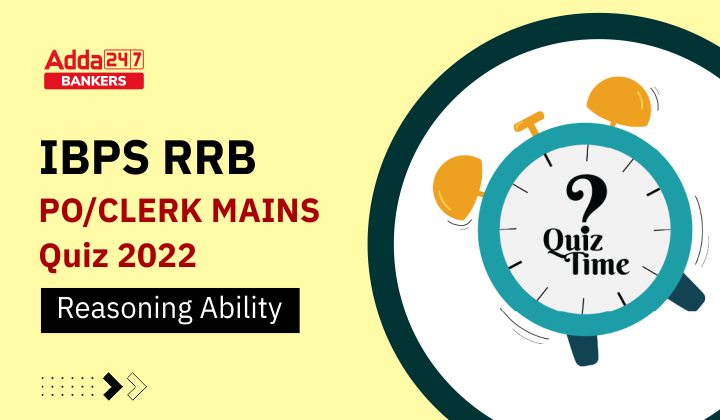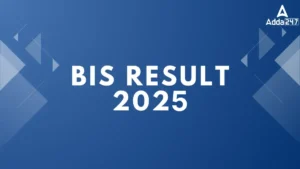Directions (1-5): Answer the questions based on the information given below.
Some boxes are placed one above the other to make up the almirah. Each box has different number of pens. There are 5 boxes between box S and box W which is at the topmost position. There are two boxes between box S and box Q. There is one box between box Q and box P which is just above the box which has 15 pens. Box T which has 10 pens is placed just below box R and just above box U. Box R is exactly between box Q and box V which is at the bottommost position. There are at most three boxes between box Q and box R. There are at least six boxes between box P and box T. The box that is placed two boxes above and the box that is placed three boxes below box R has 14 and 8 pens respectively. 6 boxes are not placed between box P and box W.
Q1. What is the total number of boxes in the almirah?
(a) 12
(b) 14
(c) 16
(d) 18
(e) None of these
Q2. How many boxes are placed above the box P?
(a) 1
(b) 5
(c) 7
(d) 11
(e) None of these
Q3. What is the position of the box Q?
(a) Two boxes above box P
(b) Three boxes below box S
(c) Fourth from the top
(d) Second from the top
(e) None of these
Q4. How many boxes are placed below box T?
(a) 1
(b) 2
(c) 3
(d) 4
(e) None of these
Q5. How many boxes are placed between box S and box P?
(a) 1
(b) 5
(c) 4
(d) 0
(e) None of these
Directions (6-10): Answer the questions based on the information given below.
Eight tourists namely A, B, C, D, E, F, G and H arrive India to visit Taj in February, March, April and May of the same year. They plan to visit Taj on 4th or 26th of these months. These tourists belong to four different countries viz. Italy, Russia, America and Sweden. Only three tourists belong to one of the countries while at least one but at most two tourists belong to each of the other three countries.
A visits Taj on 4th of a month which doesn’t have least number of days. Three persons visit between A and H who is from Sweden. Only one person visits Taj between H and D who doesn’t visit on 4th February. The person who visits Taj immediately after D is G who belongs to the same country as A. The second person visiting Taj before G and second person visiting Taj after G belong to the same country. B who is from Italy visits Taj immediately after F in the same month. Two persons visit between F and one of the persons who is from Russia. D doesn’t belong to Sweden and America. One of the persons who went in the month of February is from Russia. C who went after D didn’t go immediately after A.
Q6. Who visits Taj at the last?
(a) H
(b) G
(c) C
(d) E
(e) None of these
Q7. Who visits Taj on 26th April?
(a) E
(b) G
(c) C
(d) B
(e) None of these
Q8. Four of the following are similar in a certain way and forms a group. Find out the one which does not belong to that group.
(a) E
(b) F
(c) A
(d) H
(e) D
Q9. Which among the following statement is true?
(a) E belongs to Italy
(b) G visits Taj on 4th April
(c) A belongs to Russia
(d) A and D visit Taj in the same month
(e) None is true
Q10. E belongs to which of the following country?
(a) Russia
(b) Italy
(c) America
(d) Sweden
(e) None of these
Directions (11-15): The question consists of two statements numbered I and II given below it. You have to decide whether the data provided in the statements are sufficient to answer the question.
Q11. Six persons U, V, W, X, Y and Z are sitting in a circular table facing towards centre. Who sits to the immediate right of U?
Statements:
I. Two persons are sitting between Z and X. W is sitting to the immediate right of Z. Only one person is sitting between U and W.
II. Three persons are sitting between U and W. Y is sitting 2nd to the right of Z.
(a) The data in statement I alone is sufficient to answer the question, while the data in statement II alone is not sufficient to answer the question
(b) The data in statement II alone is sufficient to answer the question, while the data in statement I alone is not sufficient to answer the question
(c) The data either in statement I alone or in statement II alone is sufficient to answer the question.
(d) The data given in both statements I and II together are not sufficient to answer the question.
(e) The data in both statements I and II together are sufficient to answer the question.
Q12. In a certain language, words are coded as given below, what is the code for “passion”?
Statements:
I. “Following your passion” is coded as “lla ppa bba” and “passion for life” is coded as “dda cca ppa”.
II. “Whom passion is cricket” is coded as “ppa ffa tta ssa” and “life is about passion” is coded as “ppa cca tta rra”
(a) The data in statement I alone is sufficient to answer the question, while the data in statement II alone is not sufficient to answer the question
(b) The data in statement II alone is sufficient to answer the question, while the data in statement I alone is not sufficient to answer the question
(c) The data either in statement I alone or in statement II alone is sufficient to answer the question.
(d) The data given in both statements I and II together are not sufficient to answer the question.
(e) The data in both statements I and II together are sufficient to answer the question.
Q13. Six boxes M, N, O, P, Q and R are kept one above the other like a stack. Which box is kept just below box M?
Statements:
I. One box is kept between M and O. Q is kept above R. P is kept below N. R is not kept just below M.
II. Three boxes are kept between N and R. N is kept above R. O is not kept just above box P.
(a) The data in statement I alone is sufficient to answer the question, while the data in statement II alone is not sufficient to answer the question
(b) The data in statement II alone is sufficient to answer the question, while the data in statement I alone is not sufficient to answer the question
(c) The data either in statement I alone or in statement II alone is sufficient to answer the question.
(d) The data given in both statements I and II together are not sufficient to answer the question.
(e) The data in both statements I and II together are sufficient to answer the question.
Q14. There are seven persons A, H, I, N, P, S and W in a family which has three generation. How is P related to H?
Statements:
I. I is mother-in-law of P. N is nephew of H. I has no female child. S is married to A. P is not male.
II. I is mother of H who is not married. W has only one daughter who is A. H is the sibling of W.
(a) The data in statement I alone is sufficient to answer the question, while the data in statement II alone is not sufficient to answer the question
(b) The data in statement II alone is sufficient to answer the question, while the data in statement I alone is not sufficient to answer the question
(c) The data either in statement I alone or in statement II alone is sufficient to answer the question.
(d) The data given in both statements I and II together are not sufficient to answer the question.
(e) The data in both statements I and II together are sufficient to answer the question.
Q15. Seven people A, X, C, Y, E, Z and G are sitting in a linear row facing towards the north. The number of people who sit to the right of X is the same as the number of people who sit to the left of Y. How many people sit between A and E?
Statements:
I. Three people sit between C and Y. E sits second to the left of Y. E and G are sitting adjacent to each other. Z sits to the left of A. Either C or Y sits at the extreme end. Not more than two persons sit between Y and Z.
II. Three persons sit between A and G. Y and G are sitting adjacent to each other. C sits second to the right of X. Neither A nor G sits at the extreme end. Two persons sit between E and Z.
(a) The data in statement I alone is sufficient to answer the question, while the data in statement II alone is not sufficient to answer the question.
(b) The data in statement II alone is sufficient to answer the question, while the data in statement I alone is not sufficient to answer the question.
(c) The data either in statement I alone or in statement II alone is sufficient to answer the question.
(d) The data given in both statements I and II together are not sufficient to answer the question.
(e) The data in both statements I and II together are sufficient to answer the question.
Solutions






 GA Capsule for SBI Clerk Mains 2025, Dow...
GA Capsule for SBI Clerk Mains 2025, Dow...
 The Hindu Review October 2022: Download ...
The Hindu Review October 2022: Download ...
 BIS Result 2024-25 Out for ASO, JSA and ...
BIS Result 2024-25 Out for ASO, JSA and ...





